The African clawed frog, also known as Xenopus laevis, is a fascinating amphibian native to sub-Saharan Africa. These intriguing creatures have become popular aquarium residents, capturing the hearts of many beginner pet owners. But are African-clawed frogs the right fit for your fish tank?
Content Table
This blog will delve into everything you need to know about this African clawed frog in fish tanks, from their biology to practical tips for keeping them happy and healthy in your home aquarium.
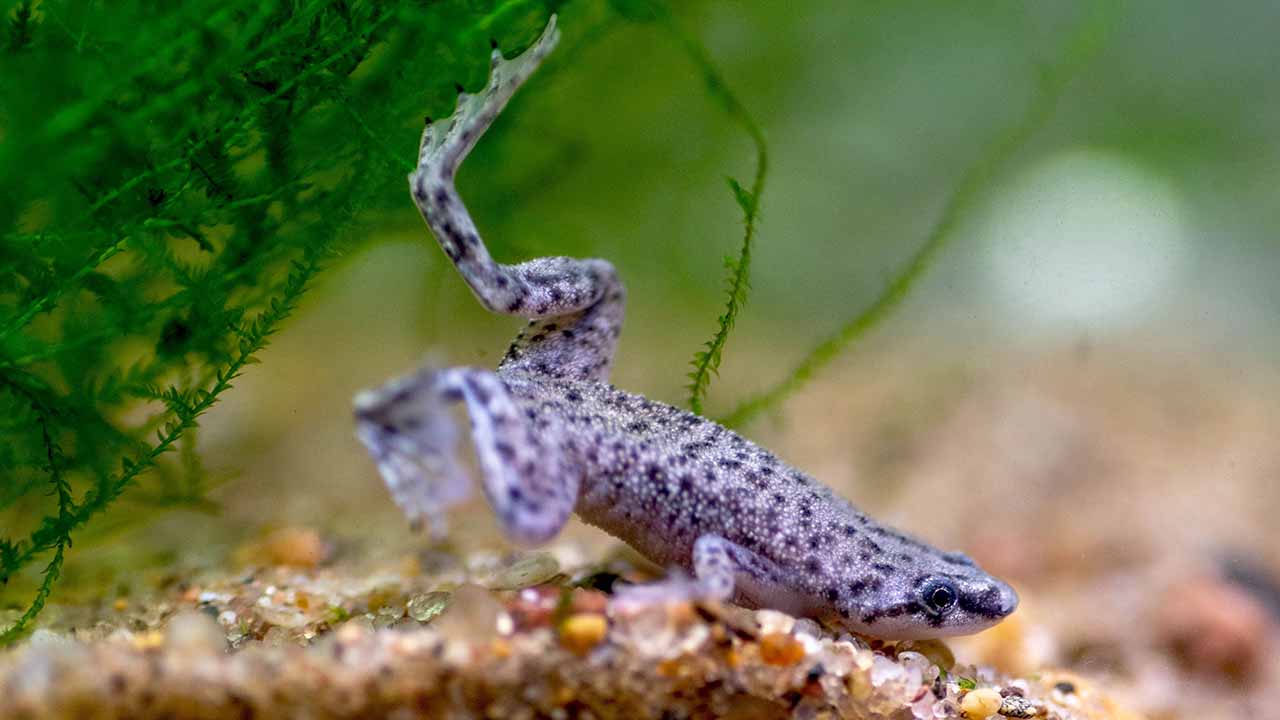
Xenopus laevis
What is an African Clawed Frog?
African clawed frogs (Xenopus laevis) belong to the family Pipidae, known as tongueless frogs. As the name suggests, these frogs lack tongues and teeth. They are entirely aquatic frogs, meaning they spend their entire lives in the water and rely on their lungs and skin to breathe. African clawed frogs have smooth, slimy skin that secretes mucus to help protect them from bacteria and parasites. One of their most distinctive features is their clawed hind legs, which they use for several purposes, including:
| Burrowing in mud | Anchoring themselves in the water while foraging | Catching prey |
These frogs are surprisingly large for amphibians kept in tanks, reaching up to 6 inches in length from head to tail.
1. Embryonic and Skeletal Development
African clawed frogs undergo a fascinating transformation from egg to adult. Here’s a simplified look at their development:
- Eggs: The female lays large, jelly-coated eggs in the water.
- Embryonic Development: Fertilized eggs rapidly develop into tadpoles within a few days. These tadpoles are gilled and breathe underwater, similar to fish.
- Skeletal Transformation: Over the next few weeks, the tadpoles undergo a metamorphosis where their gills are replaced by lungs, and their tail is reabsorbed as their legs develop. Their bones, initially made of cartilage, transform into hard bone during this metamorphosis.
- Adult Frog: In about 6–12 weeks, the tadpoles complete their transformation into adult frogs.
2. Habitat
In the wild, African clawed frogs inhabit stagnant or slow-moving freshwater like ponds, marshes, swamps, and slow-moving rivers. They are adept at burrowing in mud and can survive in waters with low oxygen levels.
3. Diet
African clawed frogs are opportunistic omnivores, meaning they will eat a variety of foods depending on what is available. In their natural habitat, their diet consists mainly of:
| Aquatic insects | Small fish | Carrion (dead animals) |
| Worms | Tadpoles |
They are ambush predators, using their keen eyesight and powerful tongues to capture prey. In captivity, they can be fed a balanced diet of:
| Bloodworms | Chopped earthworms | Commercial frog pellets |
| Brine shrimp | Crickets |
4. Temperament
Their temperament can be described as inquisitive and opportunistic. While not cuddly pets, they are known to be relatively peaceful with tank mates, though more on that later. African clawed frogs are intelligent and can exhibit some curious behaviors.
While they may not seek out interaction with humans in the same way a dog or cat might, African clawed frogs can be surprisingly tame with regular feeding and handling. However, due to their lack of teeth and claws, they are not suited for cuddling and should always be handled with care and wet hands to avoid injuring their sensitive skin.
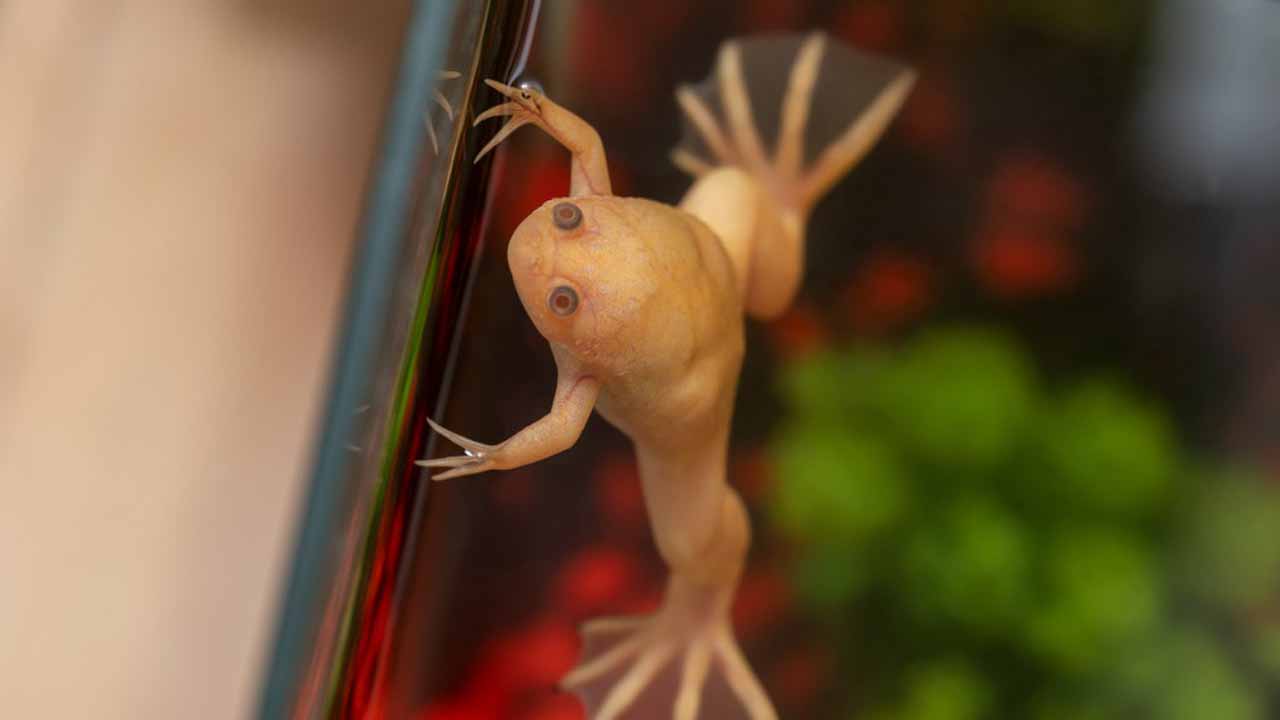
African clawed frog
What Kind of Frog Can Live in a Fish Tank?
While not all frogs are suited for fish tanks, a few species can thrive in this environment. Here are some examples:
1.African Dwarf Frog (Hymenochirus Boettgeri)
These tiny frogs, reaching only about an inch long, are peaceful and require a shallow tank (around 5 gallons) with plenty of hiding spots created by live plants, driftwood, or PVC pipes. They are visual hunters and require good water quality. Their diet consists mainly of live brine shrimp, bloodworms, and daphnia.
2. White’s Tree Frog (Litoria Caerulea)
These semiaquatic tree frogs are much more active climbers than African-clawed frogs and require a tank with a mesh top and a land area for basking and laying eggs. The water portion of the tank should be shallow enough for them to comfortably reach the surface to breathe. They are insectivores and their diet should consist of crickets, mealworms, and feeder insects.
The Cutest Frog in Fish Tanks
1. Are African clawed frogs friendly?
African Clawed Frogs aren’t exactly “friendly” in the traditional pet sense. They don’t cuddle or seek out interaction. However, they can be interesting and entertaining to watch in their tank. They can even learn to associate you with food and take treats from your hand (though avoid holding them).
2. Why the African clawed frog can be kept in fish tanks?
African Clawed Frogs can be kept in fish tanks but with some caveats. They are carnivores and will eat any fish small enough to swallow. So choosing tankmates requires caution.
Here’s why African clawed frogs can be good tank residents:
- Relatively Low Maintenance: These frogs are not demanding in terms of care. They are hardy and can adapt to a range of water conditions.
- Interesting Behaviors: African clawed frogs are active at night, and observing their feeding habits and swimming patterns can be entertaining.
- Algae Control: These frogs will happily munch on algae growing in your tank, helping to keep it clean.
3. Why the frogs are the cutest one?
“Cute” can be subjective, but there’s a certain charm to African clawed frogs. Their large eyes and inquisitive personalities can be endearing. However, their appeal goes beyond aesthetics. They can grow to be 6 inches long and need a good amount of swimming space.
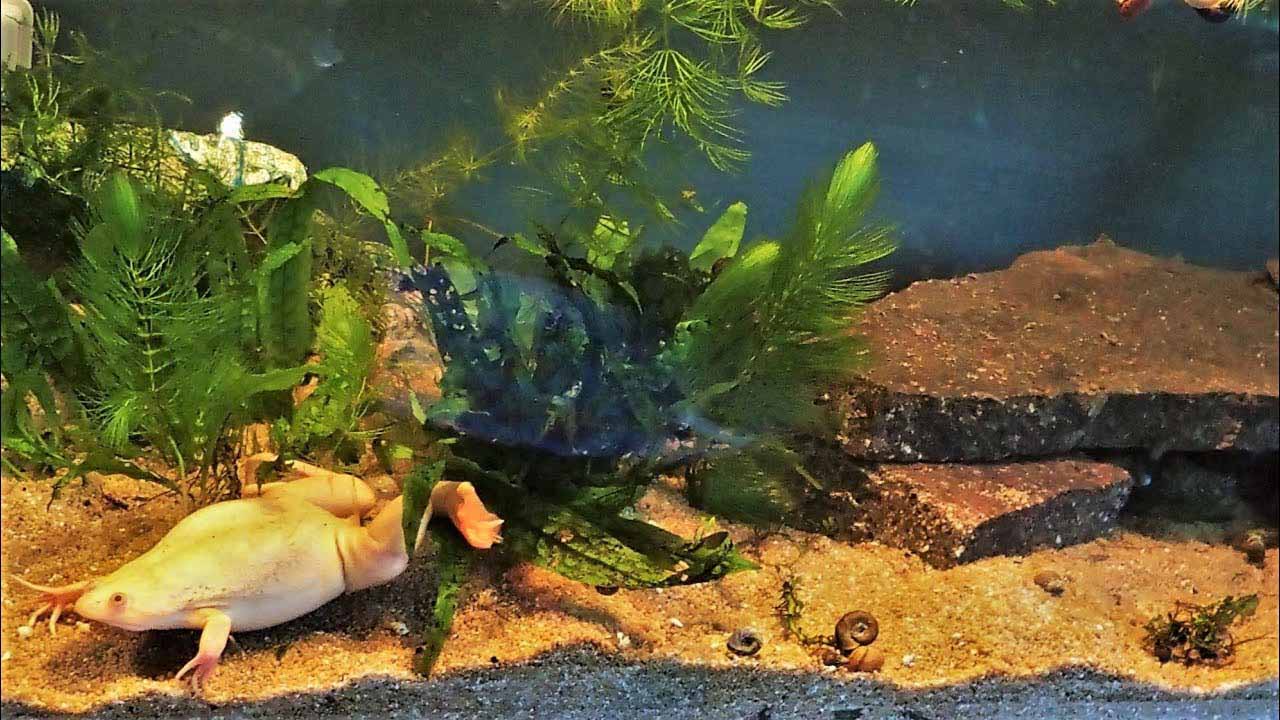
African clawed frog in fish tank
Advice for Keeping African Clawed Frog in Fish Tank
So you’ve decided to welcome an African-clawed frog in the fish tank to the family. Here’s how to set up their new home:
- Tank Size: For a single frog, a 10-gallon tank is the minimum requirement. Provide additional space if you plan on housing multiple frogs.
- Water Quality: Maintain clean water with a good filtration system. Perform regular partial water changes to remove waste products. Use a water conditioner to remove chlorine and chloramines, which are harmful to the clawed frogs.
- Substrate: Avoid small gravel or pebbles that the frog could ingest. Opt for larger gravel, sand, or bare-bottom tanks.
- Habitat Design: Provide hiding spots with rocks, driftwood, or live plants. Ensure the water depth allows the frog to reach the surface comfortably to breathe air.
- Tank Mates: African clawed frogs can be kept with peaceful fish too large to be eaten. However, avoid housing them with small fish, invertebrates, or other frogs, as they may be seen as prey.
Some Practical Tips
Here are some final pointers for happy frog ownership:
- Feeding: Feed your frog a varied diet 2–3 times a week. Avoid overfeeding, as this can deteriorate water quality.
- Temperature: African clawed frogs do not require a heater, as they thrive at room temperature (around 68-75°F).
- Lighting: Strong lighting is not necessary. A normal aquarium light cycle is sufficient.
- Escapes: African-clawed frogs are excellent escape artists. Ensure your tank has a secure lid with no gaps.
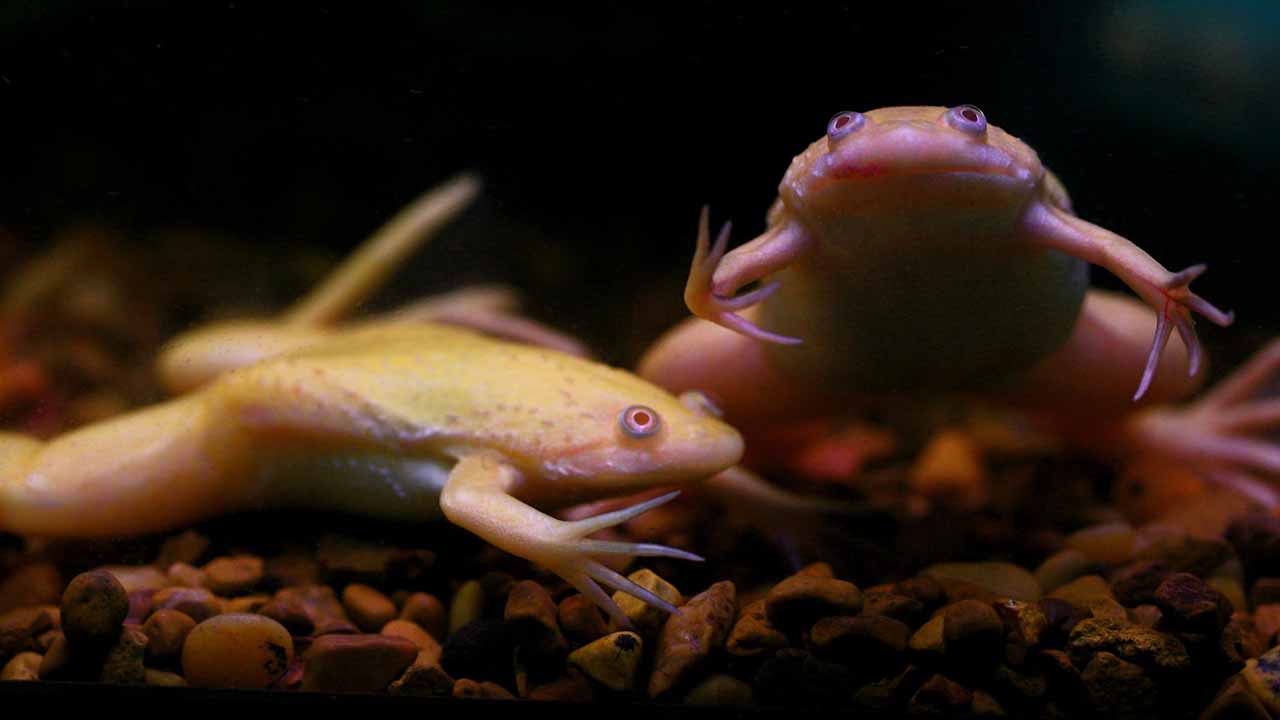
Keeping African clawed frogs
Closing Thoughts
African clawed frogs can be fascinating additions to a well-equipped tank. They are relatively low maintenance and offer interesting behaviors to observe. However, their predatory nature and potential escape artistry require careful consideration. Following the proper tank setup and care guidelines can create a happy and healthy home for your amphibious friend.
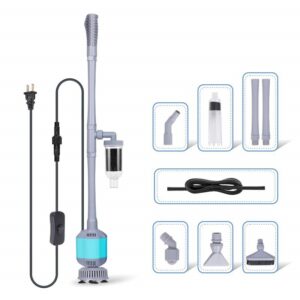
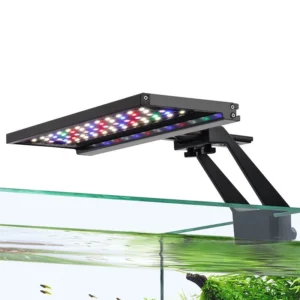
Leave a comment